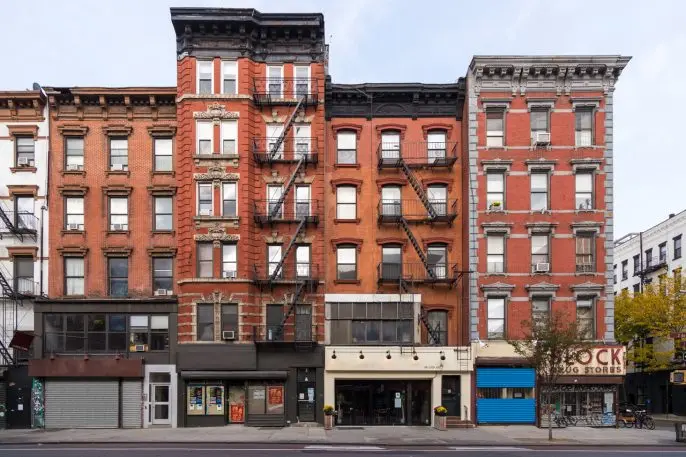When Bill de Blasio became mayor of New York City in 2014, he made no secret of his intent to place affordable housing at the center of his term. Not long after his election, he rolled out his Housing New York plan–a 10-year strategy to build or preserve around 200,000 affordable units across the city’s five boroughs.
Affordable, when it comes to housing in New York, is a slippery term. Critics of de Blasio’s plan have pointed out that the majority of the units built or converted under Housing New York remain out of reach of low-income New Yorkers–those earning less than $43,000 per year. And while the plan has succeeded making a nearly 100,000 unit dent in the city’s 550,000 affordable-unit shortfall, the terms of the new unit’s affordability are ephemeral: The majority of the units created and preserved under the mayor’s plan are only regulated temporarily, often for as little as two decades. There is no guarantee that a unit designated as affordable today will remain so in perpetuity, and with New York’s population growing and incomes failing to meet living costs, the structure of de Blasio’s plan has left housing advocates concerned.

The New York City Department of Housing Preservation and Development recently announced that it will be distributing a $1.65 million grant among four local community land trust organizations. The money comes out of $3.5 in settlements negotiated by Attorney General Eric Schneiderman against, appropriately enough, many of the large financial institutions culpable in the housing crisis; the nonprofit Enterprise Community Partners worked with the attorney general’s office to secure the funds for the development of CLTs across the state of New York, and divvied up the money between New York City and three other CLT initiatives in Albany and Nassau and Suffolk counties on Long Island.
New York City is currently home to just one fully fledged CLT: The Cooper Square Mutual Housing Association, which was established in 1994 in the East Village after a lengthy negotiation process. The city contains of the most complex networks of affordable housing solutions in the country: A combination of private, public, and nonprofit developers have a stake in the landscape. The fiscal crisis of the 1970s left a wide swath of properties vacant, relatively valueless, and in the hands of the city. In the ’80s, Mayor Ed Koch began an initiative to get those city-owned properties into the hands of developers that would rehab them into viable, profitable units. The introduction of the Low Income Housing Tax Credit in 1986 incentivized developers to convert and build affordable units, but under temporary agreements that would eventually allow them to turn market- rate. “Land trusts just didn’t take off then because there were so many different models,” Matt Murphy, assistant commissioner of strategic planning for HPD, tells Fast Company. And with the city on the upswing from a deep recession, preserving affordability over time was less of a concern.

The grant, which Enterprise Community Partners will administer directly, will enable Cooper Square to expand, but also support the development and expansion of more nascent CLT initiatives in the city. The newly formed Interboro CLT will use the money to begin acquiring properties in low-income areas in the Bronx, central Brooklyn, and Queens. The East Harlem/El Barrio CLT will work with an affordable housing developer to acquire and rehabilitate a group of buildings in the neighborhood for conversion to a CLT, and the New York City Community Land Initiative, a recently formed CLT advocacy organization, will put the grant money toward convening technical assistance and learning exchange programs for community groups interested in founding a CLT.
The money will not, says Elizabeth Zeldin, program director at Enterprise Community Partners, go anywhere near toward financing the full development of these CLT initiatives. Given that in New York City on average, it costs around $500,000 to develop a single 800-foot, two-bedroom apartment, the Enterprise grant will barely cover that baseline cost for the four grantees. “But funding for affordable housing is scarce,” she says. The New York City CLTs will use a combination of grants and loans from other public and private sources to finance their development; the money from the attorney general’s settlements will act as validation from the state, as well as support for start-up costs, “for which this is no real source of funding otherwise.”

While much of the buzz around the new CLT funding pot has focused on New York City’s share, and its potential to stymie exorbitant rents and gentrification, it’s important, Hiller says, that what are often called “weak market” or “cold market” cities–places like Detroit or Cleveland or Buffalo–understand the potential role of CLTs in their development process. Like in Albany, a CLT acquiring and buying up vacant properties and converting them to permanently affordable homes creates incentive for people to move in and stay in neighborhoods that may be struggling with population loss. “In cities where there’s a larger effort to rehabilitate blocks and neighborhoods, where there’s a growing public investment in amenities like parks, that’s where CLTs need to focus on getting a toehold,” Hiller says.
When property values are low, establishing a CLT could seem like a counterproductive endeavor, Hiller says. “It’s one of the hardest arguments to make to communities that are struggling,” Hiller says. She recalls few years ago, when she was in Cleveland on behalf of Grounded Solutions Network, trying to tell a group of local funders that this was a worthwhile model to invest in. “And they said, ‘We want values to go up, why would we want to preserve affordability?'” Hiller remembers. For the answer, she adds, look to New York City, where CLTs are having to do a very different kind of work. “At some point, they will wish they had,” Hiller says.
Recognize your brand’s excellence by applying to this year’s Brands That Matter Awards before the early-rate deadline, May 3.
